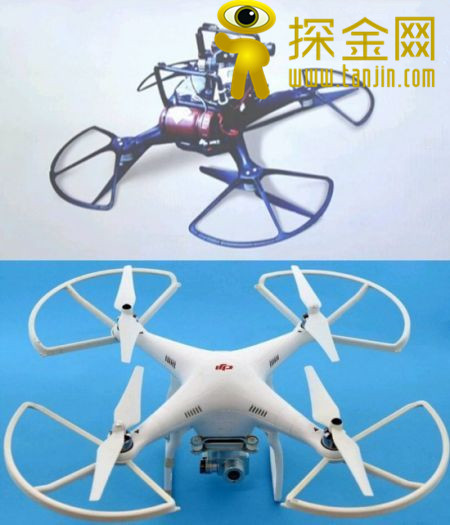
[Global Drone Report] A few days ago, news about the disturbing drones was continuously reported: Mysterious drones interfered with the Eiffel Tower; Dajiang drones broke into the White House security and crashed on the White House lawn. In response to the problem of drones, the Japanese security company is developing a new driverless probe that targets suspected unsuspecting objects that have entered illegally over important buildings.
Alsok, headquartered in Tokyo, also known as Sohgo Security Services, is tasked with protecting key facilities such as government office buildings and power plants from intruders. The company stated that the privacy issue and the threat of terrorism are the reasons why drones need to be constantly monitored.
The drone detection system works by voice of the drone. Each robot has a unique "audio fingerprint" - the rotation of the propeller, Nikkei Asia commentary explains. Alsok uses a microphone to detect suspicious drones hovering overhead. The microphone can listen to sound in any direction around 500 feet. The detected audio is then matched against the Alsok database that records all drone audio.
The company said that security personnel can not only detect where the drone came from, but also detect the type of drone. Since many drones are invisible to radars, this method is currently the simplest and most effective.
The company will also dispatch its so-called "Super Security Guard" - a person equipped with a wearable camera and a smartphone to handle drone harassment.
Japan has now explored the development of drone safety flight rules. Last month, an aircraft with a small amount of radioactive material crashed onto the roof of the Japanese Prime Minister’s residence. The Japanese government announced last week that it is forbidden to fly small drones in Tokyo Park to ensure the safety of visitors and children.
However, these detection systems are not unique to Japan. DC-based Drone Shield, like Alsok, uses the same audio recognition method. According to its website, Drone Shield uses a database that stores the acoustic characteristics of common drones, thereby reducing false alarms and, in many cases, drone types are also included in the alerts.
With the frequent occurrence of negative news on drones, we expect more anti-drug technologies to emerge.